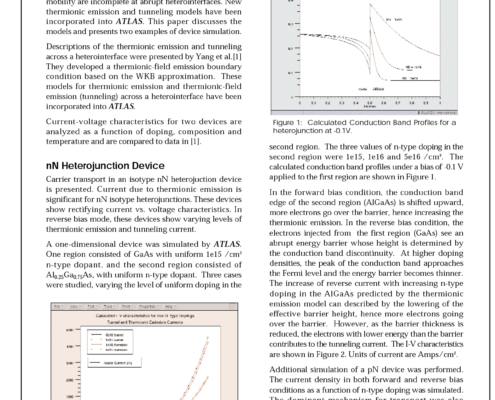
New Thermionic Emission and Tunneling Models in ATLAS
In order to simulate heterojunction devices accurately, both the thermionic emission and tunneling mechanisms must be considered when calculating transport across hetrojunctions. Drift-diffusion descriptions of carrier mobility are incomplete at abrupt heterointerfaces. New thermionic emission and tunneling models have been incorporated into ATLAS. This paper discusses the models and presents two examples of device simulation.
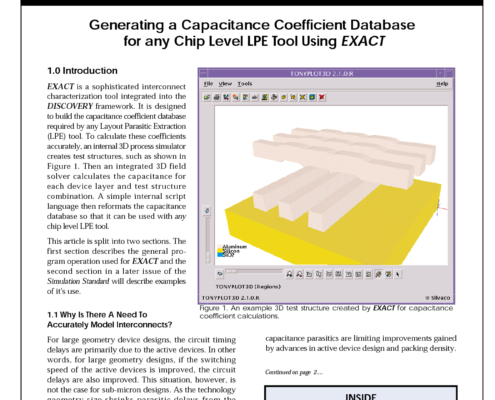
Generating a Capacitance Coefficient Database for any Chip Level LPE Tool Using EXACT
EXACT is a sophisticated interconnect characterization tool integrated into the DISCOVERY framework. It is designed to build the capacitance coefficient database required by any Layout Parasitic Extraction (LPE) tool. To calculate these coefficients accurately, an internal 3D process simulator creates test structures, such as shown in Figure 1. Then an integrated 3D field solver calculates the capacitance for each device layer and test structure combination. A simple internal script language then reformats the capacitance database so that it can be used with any chip level LPE tool.
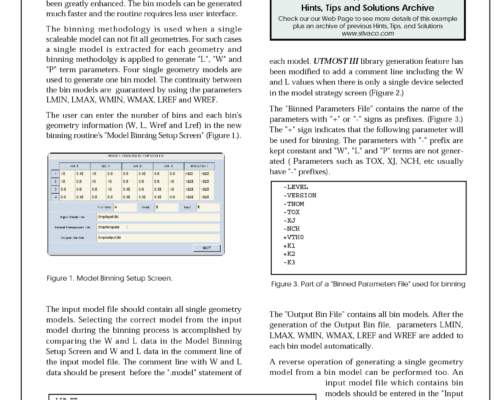
Hints & Tips July 1999
The "Binning" routine in UTMOST III MOS module has been greatly enhanced. The bin models can be generated much faster and the routine requires less user interface.
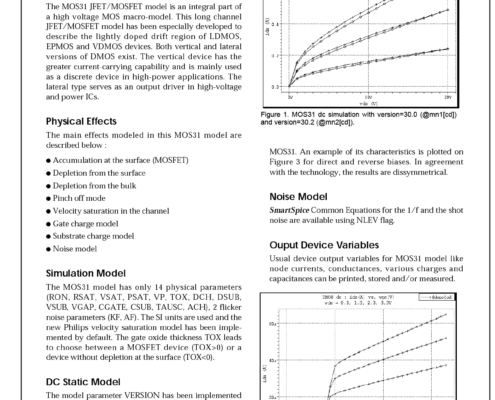
MOS31 JFET/MOSFET Model Now Available in SmartSpice
Silvaco now offers the MOS31 JFET/MOSFET model originally developed by Philips [1] as part of the SmartLib product-independent model library. This model is available within SmartSpice as level 31.
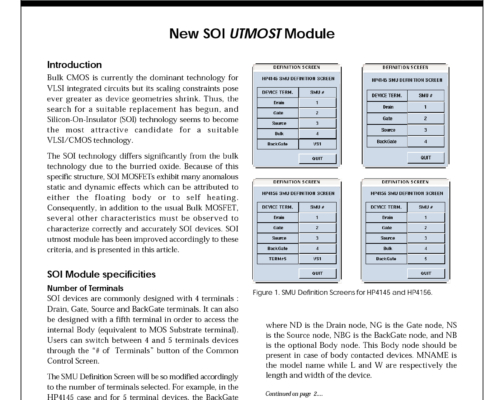
New SOI UTMOST Module
Bulk CMOS is currently the dominant technology for VLSI integrated circuits but its scaling constraints pose ever greater as device geometries shrink. Thus, the search for a suitable replacement has begun, and Silicon-On-Insulator (SOI) technology seems to become the most attractive candidate for a suitable VLSI/CMOS technology.
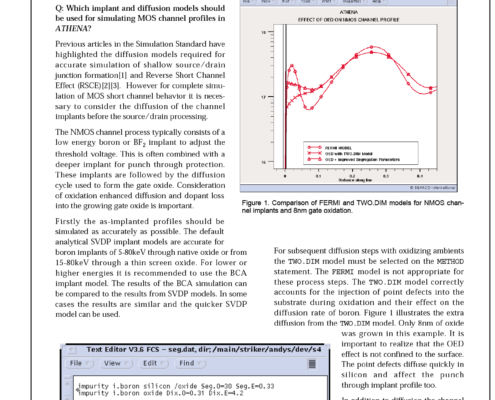
Hints & Tips May 1999
A. Previous articles in the Simulation Standard have highlighted the diffusion models required for accurate simulation of shallow source/drain junction formation[1] and Reverse Short Channel Effect (RSCE)[2][3]. However for complete simulation of MOS short channel behavior it is necessary to consider the diffusion of the channel implants before the source/drain processing.
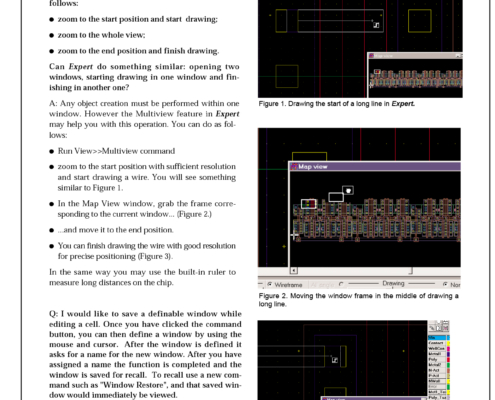
Hints & Tips June 1999
Q: I want to draw several long wires, with precise positioning of both ends. I am used to doing this as follows:
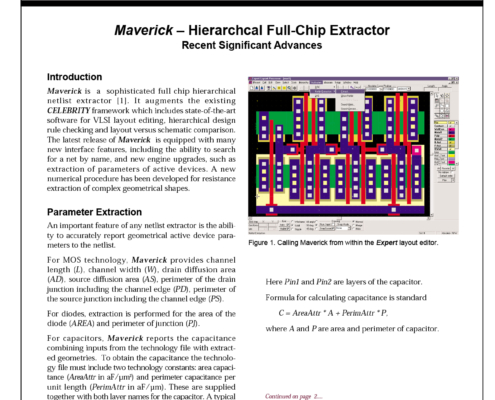
Maverick- Hierarchcal Full-Chip Extractor Recent Significant Advances
Maverick is a sophisticated full chip hierarchical netlist extractor [1]. It augments the existing CELEBRITY framework which includes state-of-the-art software for VLSI layout editing, hierarchical design rule checking and layout versus schematic comparison. The latest release of Maverick is equipped with many new interface features, including the ability to search for a net by name, and new engine upgrades, such as extraction of parameters of active devices. A new numerical procedure has been developed for resistance extraction of complex geometrical shapes.
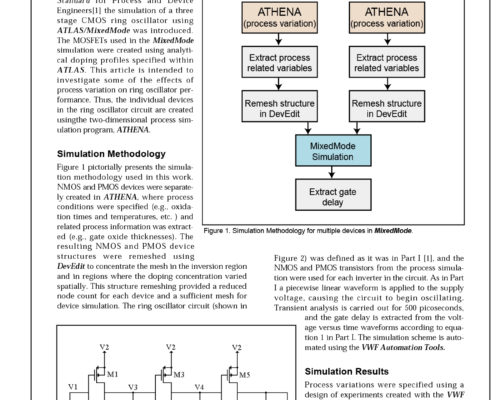
Circuit Performance Analysis of Multiple ATHENA Transistors Using MixedMode
In a previous issue of Simulation Standard for Process and Device Engineers[1] the simulation of a three stage CMOS ring oscillator using ATLAS/MixedMode was introduced. The MOSFETs used in the MixedMode simulation were created using analytical doping profiles specified within ATLAS. This article is intended to investigate some of the effects of process variation on ring oscillator performance. Thus, the individual devices in the ring oscillator circuit are created usingthe two-dimensional process simulation program, ATHENA.
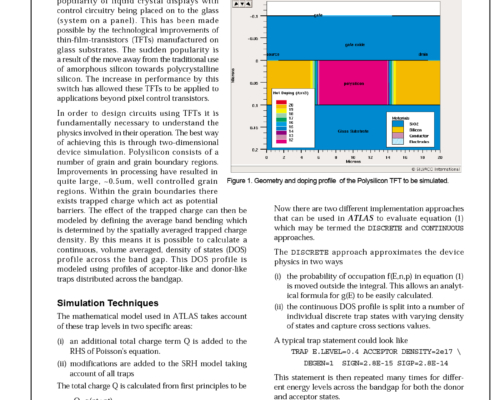
Continous Trap Model for Accurate Device Simulation of Polysilicon TFTs
There has been a significant increase in the popularity of liquid crystal displays with control circuitry being placed on to the glass (system on a panel). This has been made possible by the technological improvements of thin-film-transistors (TFTs) manufactured on glass substrates. The sudden popularity is a result of the move away from the traditional use of amorphous silicon towards polycrystalline silicon. The increase in performance by this switch has allowed these TFTs to be applied to applications beyond pixel control transistors.
